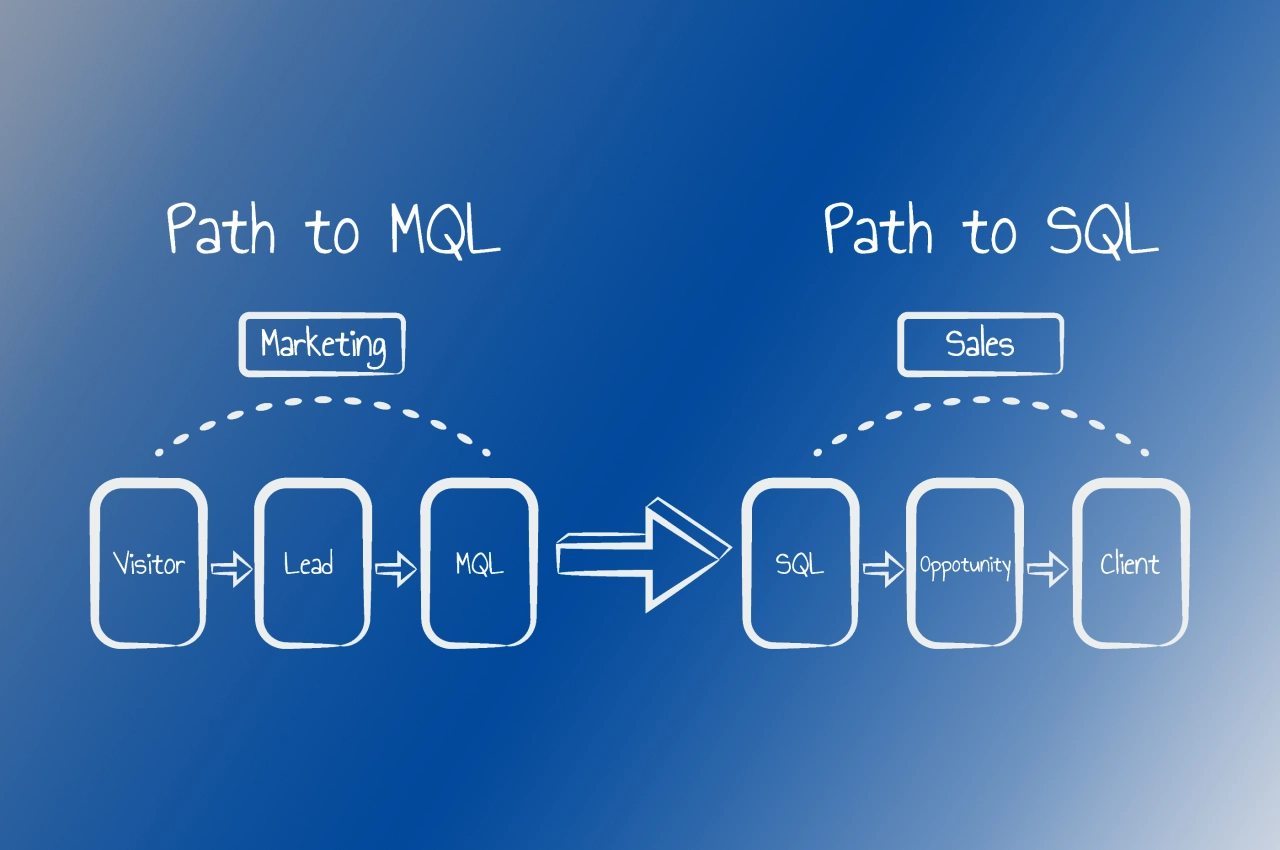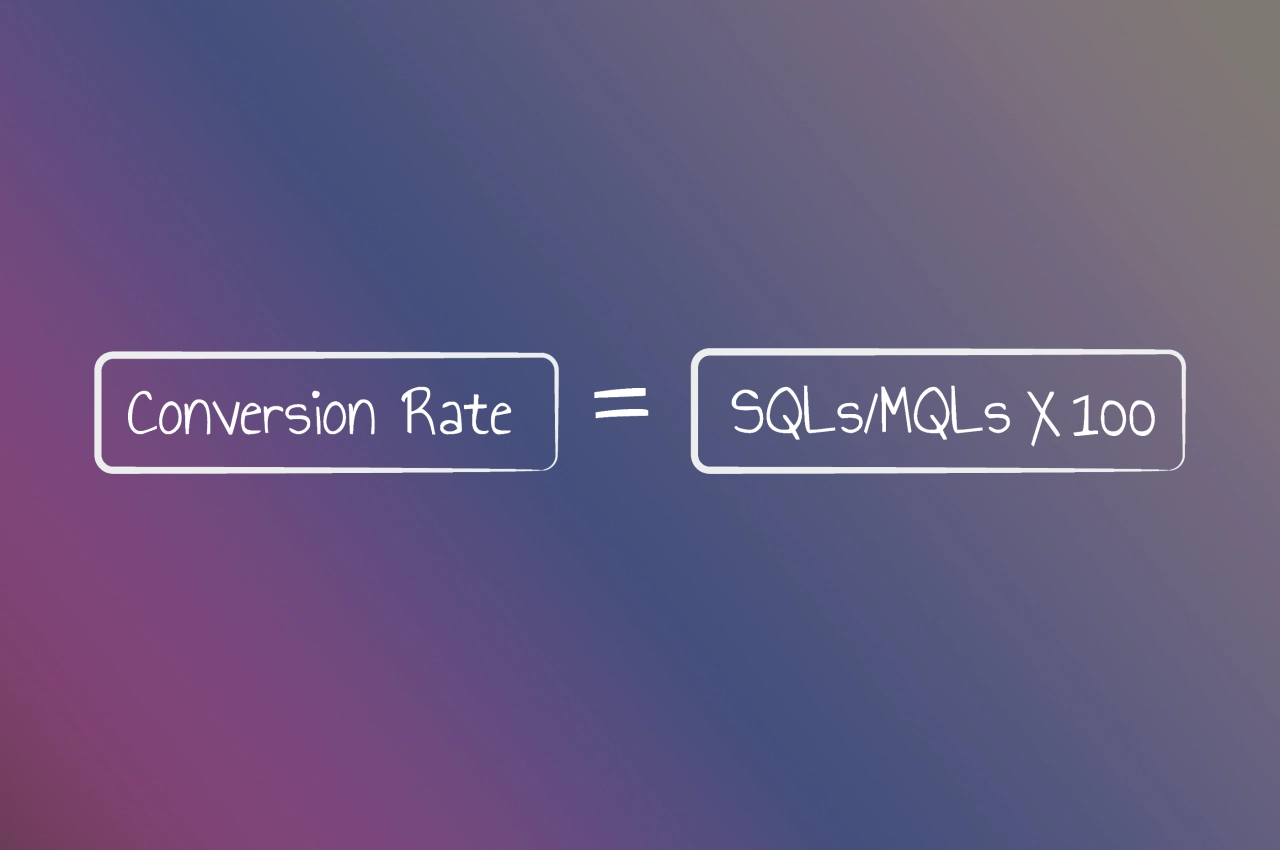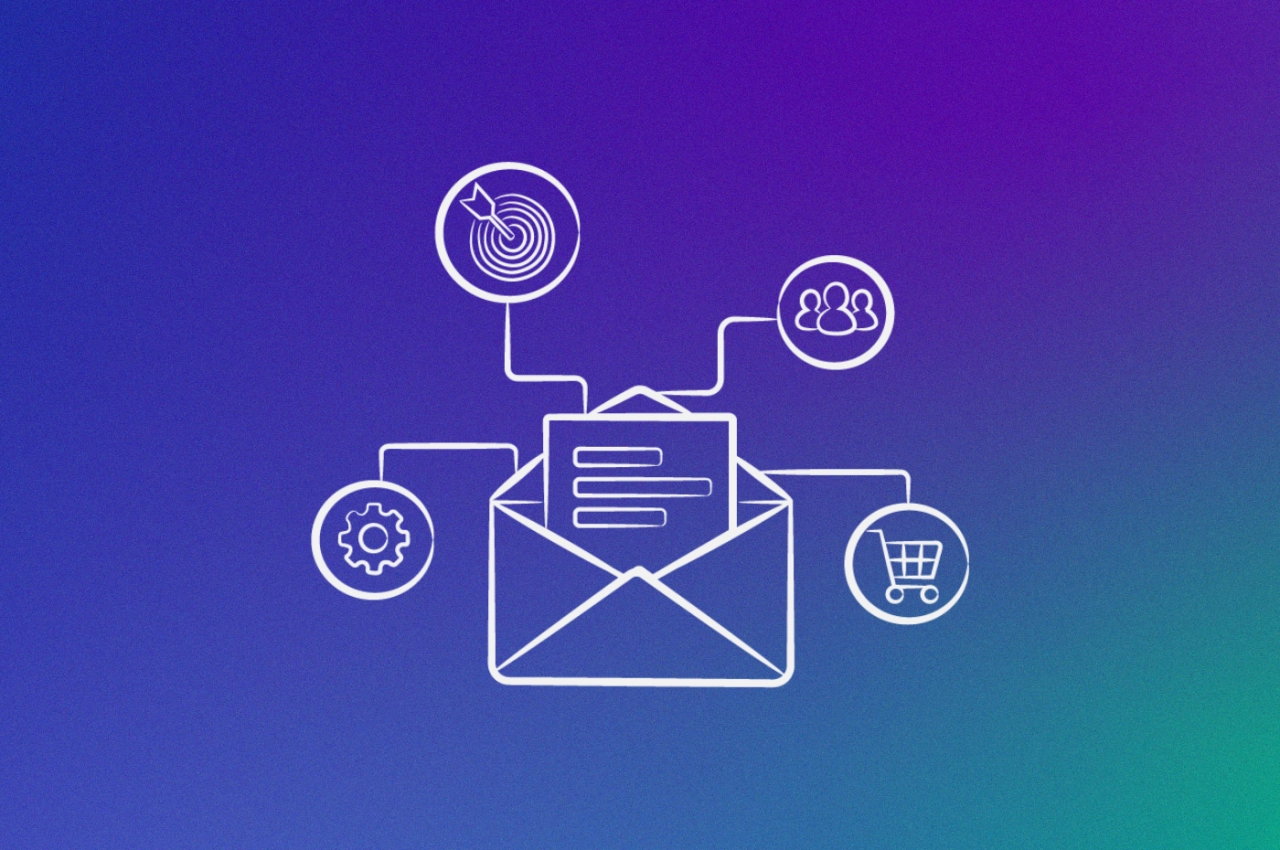- MQLs (Marketing Qualified Leads) are potential clients who have shown some amount of interest in a company’s offerings (e.g., by signing up for newsletters, downloading ebooks, etc.), while SQLs (Sales Qualified Leads) have shown actionable interest by engaging with your content and showing a genuine interest in purchasing.
- Transitioning leads from MQLs to SQLs requires strategic timing, lead scoring and automation, immediate attention for eager high-potential leads, and nurturing through providing valuable content throughout the sales funnel.
- Monitoring the conversion rate from MQLs to SQLs gives insights into the effectiveness of lead generation strategies, identifies bottlenecks, allows the allocation of resources and increased revenue by focusing on leads with a higher likelihood of converting to paying customers.
So, you’ve taken the plunge. You’ve set foot into the thrilling world of marketing agencies where creativity is king, data reigns supreme, and every day is an adventure. But what does it take to thrive in this fast-paced jungle of ideas and strategies? And how do you make use of analytics for agencies to get an edge over the competition?
Let’s say you’ve got that Mad Men flair. You’re also armed with a dash of coffee-induced enthusiasm, a catchy slogan, and a snazzy website to boot. But does that mean you’re ready to take over the advertising universe?
Let’s be real. You need more than charisma and aesthetics to thrive. You need something that can be counted. Something that can be tracked and optimized. You, my friend, need leads.
In the marketing agency realm, leads are your golden ticket. They’re your lifeblood. They’re the potential clients who show interest and might just be your agency’s next success story. But here’s the kicker: not all leads are created equal.
This is where the plot thickens. In your journey to starting an agency business, you’ll encounter two distinct types of leads—MQLs and SQLs. These acronyms may sound like alphabet soup, but understanding them is the key to unlocking your agency’s true potential.
So, grab your fedora and your favorite coffee mug because, in this article, we’re about to delve deep into the captivating world of MQLs and SQLs, the dynamic duo of the agency game.
What is an MQL?
So, what in the world is an MQL, and why should you care about one?
Well, MQL stands for marketing qualified lead, and you can think of them as the initial spark between you and a potential client. An MQL is someone who has expressed some level of interest in what you’re offering. They’re like the intriguing character who strolls into a Mad Men episode, catching everyone’s eye with an air of curiosity.
MQLs can take various forms. Maybe they’ve signed up for your newsletter, downloaded a helpful eBook, or requested more information about your services. They’re not quite ready to shout, “I’m in!” from the rooftop, but they’re definitely curious enough to hang around the party.
So, how much attention should you pay to MQLs? Well, you definitely shouldn’t ignore them. With careful nurturing, engagement, and education, these leads can definitely turn into buyers.
However, because they’re not far enough into your sales funnel, they’re still short of getting the personal attention of your sales team.
What is an SQL?
Now that we’ve got our MQLs sorted out, it’s time to turn our attention to the other half of the dynamic duo: SQL. So, what’s an SQL, and why is it a game-changer in the world of marketing agencies?
SQL stands for sales qualified lead. Picture this: you’ve been waltzing around the marketing ballroom with your MQLs, having engaging conversations, and slowly but surely building a connection. And suddenly, there’s a tap on your shoulder, and someone says, “I’m ready to buy.” That someone, my friend, is an SQL.
SQLs are the stars of the show, the clients who’ve raised their hands and declared, “I’m all in!” They're like the characters in Mad Men who walk into a pitch meeting with a suitcase full of cash and a smile that says, “Let’s do business.”
But here’s the magic: SQLs aren’t just interested; they’re ready to take action. They’ve gone beyond the window-shopping phase and are now browsing your offerings with a firm intention to buy. These are the prospects who have not only engaged with your content but have also demonstrated a genuine interest in your products or services.
SQLs are the treasure trove of any marketing agency. They’re the ones who are more likely to convert into paying clients, bringing in revenue and helping your agency thrive. They’ve gone from being curious onlookers to enthusiastic dance partners, and it’s time to take center stage with them.

However, like any good Mad Men episode, there’s always a twist. Not every MQL will become an SQL, and not every SQL will convert into a delighted client. That’s where your marketing and sales teams need to work their magic, nurturing these SQLs, addressing their concerns, and guiding them toward the grand finale—becoming a loyal customer.
Difference between MQLs and SQLs
As we navigate the maze of lead generation in the agency world, distinguishing between MQLs and SQLs is akin to separating the wheat from the chaff. It’s a vital step in the lead nurturing and scoring process, helping businesses fine-tune their strategies for optimal results. Let’s delve into the art of distinguishing these valuable leads.
Lead behavior: the trail to differentiation
Lead behavior is the treasure map for categorizing your prospects. It reveals how they engage with your brand and where they stand in your sales funnel. We examine a few critical aspects of their behavior to pinpoint their location.
1. Visitor Frequency
MQLs: Typically, a first-time visitor to your website is a potential MQL. They’ve just arrived at the marketing party, curious about your offer.
SQLs: SQLs, on the other hand, are the frequent flyers. These visitors keep returning, exploring your product pages, and signaling strong interest. They’re ready for the spotlight.
2. Engagement Count
MQLs: For MQLs, engagement might be minimal—perhaps interacting with a single landing page or resource.
SQLs: SQLs tend to engage across multiple lead generation landing pages and resources. The more they interact, the higher their chances of transitioning to SQL status.
3. Type of conversion
MQLs: Actions like downloading a free eBook or attending a webinar are typical MQL interactions.
SQLs: SQLs lean towards more decisive actions, like requesting a product demo. Their intent signals a deeper interest in making a purchase.
4. Referral channel
MQLs and SQLs: Referral channels play a significant role in differentiation. Your business probably has multiple lead generation channels; however, as per Parreto’s law, most of your leads will likely come from a select few.
If you’ve got enough data available, you should be able to tell which channels are more successful at turning leads into paying customers. Leads arriving from high-performing channels that often convert to paying customers may be fast-tracked to SQL status.
5. Contact requests
SQLs: A lead proactively requesting contact or a demo is a strong indicator of SQL status. It showcases their determination to explore your product or service further.
Pro tip: Your sales team should always verify if leads/contacts have the necessary authority to make purchasing decisions.
Transitioning leads from MQLs to SQLS
Moving from marketing qualified leads (MQLs) to sales qualified leads takes precision and collaboration between your marketing and sales units.
Let’s take a look at some guidelines that can help make this transition a lot smoother.
The art of timing: don’t rush the handoff
One mistake teams tend to make when it comes to moving MQLs to SQLs is focusing too much on the number of the lead’s interactions and too little on their quality. Sure, frequent engagements are nice to have, but the quality of those actions should interest you more.
Let’s take a look at two examples to see what we mean:
Example 1: Let’s say you have a new lead who just can’t stop asking questions. Does this mean he’s ready to let his wallet do the rest of the talking? You’d be best not to assume this. While this type of engagement is definitely beneficial, it doesn’t necessarily mean the lead has reached a stage where he’s ready to act.
Example 2: Similarly, someone visiting the pricing page early in the buying cycle doesn’t make them a hot prospect. That person may still be in the research phase, comparing alternatives, reading reviews, and so on. All this indicates they may not be ready for direct sales contact yet.
So, what’s the right way to go here? Well, we champion an approach where you evaluate a lead’s entire journey with your brand, not just isolated touchpoints.
The science of lead scoring and automation
At this point, you probably wonder how does one evaluate a lead’s entire journey. It’s quite elementary: you apply lead scoring (something we’ll touch upon in more detail in a separate section below) and automation.
Lead scoring means giving your leads scores based on specific criteria. A positive action, such as downloading a piece of material, would win the lead valuable points. Negative actions, like unsubscribing from your newsletter, would yield negatively affect the lead’s score.
When a lead reaches a certain threshold you decide upon, they become an SQL.
Now, what about automation? Automation is often integrated with customer relationship management (CRM) or Customer Success Software (CSS) systems.
If you’d like to find out the differences between a CRM and a CSS and which is better for your business, check out this detailed comparison. The benefit of these tools is they can handle the handoff of SQLs to your sales team seamlessly. You can set email notifications or tasks to be triggered automatically, ensuring a swift response to those high-potential leads.
The Crucial Role of Collaboration
While automation plays a significant role, human collaboration remains king. Regular meetings between marketing, customer success and sales teams are essential. These meetings provide the opportunity to discuss SQLs, assess lead behavior, and refine the handoff process.
It’s a chance for both teams to align on goals, share insights, and make adjustments if needed. Together, they navigate the evolving landscape of lead transitions, ensuring a synchronized and efficient process.
The pro move: immediate attention for eager prospects
Some leads are like shooting stars. You’ll miss them if you don’t raise your look fast enough. This means you need immediate attention. If a lead explicitly requests to speak with the sales team, ensure your transition process or technology can expedite their journey. These prospects are the top priority for your sales team and warrant swift engagement.
The art of nurturing
Most leads, however, need nurturing before they’re ready to engage with sales. Providing valuable content throughout the sales funnel is your secret weapon. It’s a practical approach to operating efficiently, achieving your lead targets, and cultivating a loyal customer base that views you as a trusted partner.
In the intricate dance of transitioning MQLs to SQLs, remember that it’s not a sprint but a carefully orchestrated symphony. Balancing artful evaluation with scientific lead scoring and maintaining a harmonious collaboration between marketing and sales ensures your transition process hits all the right notes. And in the end, it leads to a crescendo of successful conversions and lasting customer relationships.
How to calculate your MQL to SQL conversion rate
Don’t worry, calculating your MQL to SQL conversion rate is hardly rocket science. After choosing the period of time for which you want to calculate it, the formula for it is:

Conversion Rate = SQLs/MQLs X 100
So, let’s say you had 500 MQLs coming in on a 30-day period. One hundred of them ended up becoming SQLs. Based on the formula above, your conversion rate would be:Conversion Rate = (500/100) X 100 = 20%
Measuring the conversion rate from marketing qualified leads (MQLs) to sales qualified leads (SQLs) is paramount in assessing the effectiveness of your lead generation and qualification strategies. It offers critical insights into the quality of leads generated and the alignment between marketing and sales efforts.
By tracking this conversion rate, you can identify bottlenecks, optimize processes, allocate resources more efficiently, and ultimately increase revenue by focusing on leads with a higher likelihood of conversion.
Lead scoring as a crucial component
First things first: What is lead scoring?
Well, it’s the process of assigning a score (typically from 0 to 100) to each lead. The higher the score, the more likely that lead is to convert to a paying customer.
In other words, lead scoring is a way of determining the quality of your leads. Besides this, it also gives you a quantifiable and standardized measurement for classifying each lead as an MQL or SQL.

Now, how do you assign a score? One way of doing it is by giving a certain score to each action that lead performs. Did they visit a website more than once? Every visit may earn him a point.
How many of your emails did they open? Once again, every opened email wins him another point.
Have they downloaded any materials yet? This could earn him 5 or 10 points, depending on your scoring system.
However, you should also prepare to assign negative scores. Let’s say a user filled out a contact form and has then completely ghosted you. Or maybe they unsubscribed from your newsletter. That’s another minus 5 points right there.
At the end of the day, lead scoring isn’t just about numbers; it’s about action. Once you’ve assigned scores and dissected your data, the natural progression leads to classification. Your leads are now distinguishable as marketing qualified leads (MQLs) or sales qualified leads (SQLs). This classification is more than a label; it’s a roadmap for your marketing and sales teams. Each lead is placed on a path that aligns with their readiness to convert.
MQLs vs SQLs FAQ
How do MQLs become SQLs?
The transition from MQL to SQL involves lead scoring, where data and behavior matter. When a lead hits a specific score, they become an SQL. Next, the sales team takes over. For leads not quite ready, we nurture them with content. It’s a blend of data-driven scoring, behavior analysis, and sales evaluation.
What does MQL stand for?
MQL stands for Marketing Qualified Lead. Think of it as a label used in the marketing world to identify potential customers who have shown an interest in our products or services. It’s like a way of saying, “Hey, these folks have engaged with our content or website, and they might be ready to take the next step toward becoming customers.”
What is the average conversion rate from MQL to opportunity?
SalesForce places the average MQL to SQL conversion rate at around 13%. Out of this remaining 13 %, only 6% end up as actual paying customers.
Final thoughts
As you can see, the process of turning a potential customer into a real one takes strategy, insights, and careful collaboration. It’s important to realize SQLs and MQLs aren’t just terms on paper; they’re cornerstones digital marketing agency growth.
Transforming an MQL into a SQL means carefully blending in the art of lead scoring, behavior analysis, and human expertise. And do keep in mind that it’s not something you set and forget. Far from it. In fact, it’s a process that needs constant refinement. After all, each lead is unique, each behavior a clue, and each collaboration a step forward.
Victor Antiu is the Marketing Manager at Custify. With nearly 10 years experience, his focus is product marketing and B2B inbound strategy. When he’s not trying to fix websites and automate processes, he’s traveling and sailing around the world.













